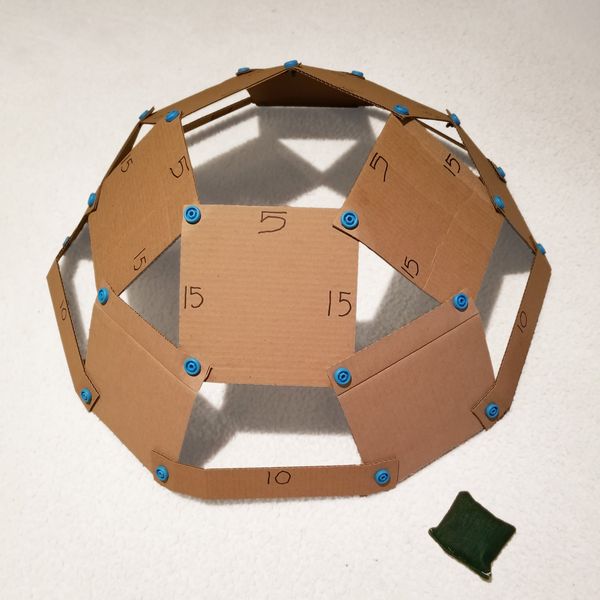Introduction

Make a challenging game.
Students explore how to channel challenge into an opportunity for growth by creating a fun (yet tricky) arcade-style game.
Subjects
English, Science, HASS, Visual Arts, Design and Technologies, Health and Physical Education
Objectives
Preparation
Resources
Makedo Invent Kit
Upcycled cardboard
Assorted materials for the game (eg. CDs, table tennis balls, etc. Upcycled where possible!)
Activity
Lesson Steps
Part 1 - Game Making
Explain to students that they will be creating a single-player arcade-style game. Their game should have an objective (eg. get the ball in the hole), be fun, and most of all, it MUST be challenging.
Provide time for students to design their game with a sketch or annotated diagram, taking inspiration from the materials on hand.
Allow at least 45 minutes to create the game. Encourage students to test it several times to ensure it works and is at an appropriate difficulty level.
Part 2 - Play time!
Invite students to try each other's games. This could be a swap in partners, or you could set up the classroom like an arcade, and students can roam around and play.
Part 3 - Group Discussion
What did it feel like in your body when you faced challenges playing the games? Can you name any emotions you were experiencing?
Reflect on how you managed these challenges/failures. Did you give up? Maybe you took a break and then came back to it? Perhaps it made you more determined, and you persevered. Or maybe it was something else altogether.
Can you think of a time in the past when you failed and were able to channel it into a positive? How did you do this?
What is a growth mindset? How does it differ from a fixed mindset?
🎓 Teacher note: According to Harvard University, “Growth mindset is the belief that one’s abilities can grow with effort. Students with a growth mindset believe that they can develop their skills through effort, practice, and perseverance. These students embrace challenges, see mistakes as opportunities to learn, and persist in the face of setbacks. By contrast, students with a fixed mindset believe that their own intelligence and talent are innate traits that don’t change. These students typically worry about not looking smart, get upset by mistakes, and give up sooner on tough tasks.”
Consider a challenge you face regularly (eg. difficulty with fractions in math) and think about how you could approach it with a growth rather than a fixed mindset.
🎓 Teacher note: You could say to yourself, ‘I haven’t learnt this yet’, ‘challenges help me grow’, ‘mistakes are part of learning’, ‘can I try this a different way?
Watch the clip below and share your key takeaways.
🎓 Teacher note: This clip provides a great opportunity to reiterate that challenges and failure are a part of life for EVERYONE. You may like to reiterate that Michael Jordan, one of the most successful basketballers of all time, once said: “I've missed more than 9,000 shots in my career. I've lost almost 300 games. 26 times, I've been trusted to take the game-winning shot and missed. I've failed over and over and over again in my life. And that is why I succeed.” Challenge and failure can be a wonderful opportunity for growth if we choose to see them this way.
Reflection
Journal Prompts
What was your favourite part of this activity? What was your least favourite? Is there anything that you would change if you were to make the game again?
What do you think is meant by the statement: To fail is to have tried? Do you agree?
Your game was meant to be fun. Why is having fun important? Can you learn to have more fun by changing your attitude and approach to life? Explain.
Extension
Take It Further
Famous Failures: Students research well-known people who have channelled failure into success. Michael Jordan, Walt Disney, Albert Eiin and Rihanna are good examples.
What Are The Odds?: Students explore probability by guessing the outcome of a game before each trial, then document the results.
Failure Poem: Students read either ‘Failure’ by Amos Russel Wells (older students) or this quote by Thomas Edison (younger students) and discuss their interpretations. They then write a poem about channelling failure and challenge into opportunity.
Inspirational Film: Students make a short clip to educate and inspire other young people about the importance of, and opportunity in, failure.

